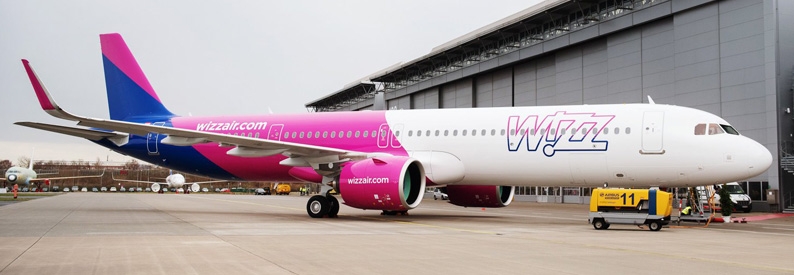Wizz Air Operating Profit Drops 38% Amid Engine Groundings and Rising Costs

Wizz Air has reported a 38% decline in operating profit for the first quarter of its 2026 financial year, attributing the downturn to increased operational expenses and ongoing Pratt & Whitney GTF engine groundings. The low-cost carrier posted an operating profit of €27.5 million for Q1 FY26, down from €44.6 million in the same quarter last year, according to unaudited financial results released on July 24, 2025.
The airline cited higher airport, handling, and en-route charges, depreciation, and engine-related disruptions as key factors affecting profitability. Despite these challenges, Wizz Air reported a 2.1% year-on-year increase in total revenue per available seat, reaching €4.41. Ticket revenue rose by 2.5% to €2.47, while ancillary revenue grew 1.6% to €1.94.
Net profit climbed to €38.4 million, boosted by an unrealized foreign exchange tailwind. The carrier also improved its financial standing, with a 13.2% rise in total cash to €1.96 billion and a 5.1% reduction in net debt to €4.71 billion. EBITDA increased 9.3% to €300.2 million, with margins rising to 21%. Capacity, measured in available seat kilometers (ASK), increased by 11% compared to Q1 FY25. Passenger traffic also surged, with 17 million travelers carried in Q1 FY26, up from 15.3 million a year earlier.
During the quarter, Wizz Air took delivery of 10 Airbus A321neos and one A321XLR, while redelivering six older A320ceos. Its fleet now stands at 236 aircraft, including 157 A321neos and 31 A320ceos. However, GTF engine-related issues continue to hamper operations, with 41 aircraft grounded as of June 30, 2025. The average number of grounded jets for FY26 is projected at 35, slightly better than the 44 average in FY25.
CEO József Váradi stated that the airline is working to lift grounded aircraft and accelerate the retirement of older A320ceo models, adding that this would require modifications to future aircraft delivery schedules to align capacity with revised demand projections.
As part of a strategic realignment, Wizz Air announced its exit from the Wizz Air Abu Dhabi (WAAD) joint venture on July 14, 2025. The decision was driven by engine performance challenges in harsh climates, constrained maintenance capacity, geopolitical instability, and limited market access. The airline plans to reassign four A321neos to European operations, while eight A320ceos will remain parked, used only during peak demand. Wizz anticipates minimal near-term financial impact and expects benefits to emerge from FY27 onward.
The company believes the exit from Abu Dhabi will eliminate a structurally unprofitable unit, boost fleet utilization, and sharpen its focus on core European markets. “Planes will be migrated to Europe where they can generate better financial performance,” Wizz Air said in a statement.
Looking ahead to Q2 FY26, Wizz forecasts ASK capacity growth in the high single digits year-over-year. Load factors are expected to remain steady, and RASK is predicted to be flat. Meanwhile, CASK is expected to benefit from lower fuel costs and improved non-fuel unit efficiency compared to Q1.
CEO Váradi concluded, “Our management team has demonstrated a high degree of adaptability in recent years when faced by severe challenges, and this year will likely continue to call on that strength as we refocus our business.”
Related News : https://airguide.info/?s=Wizz+Air
